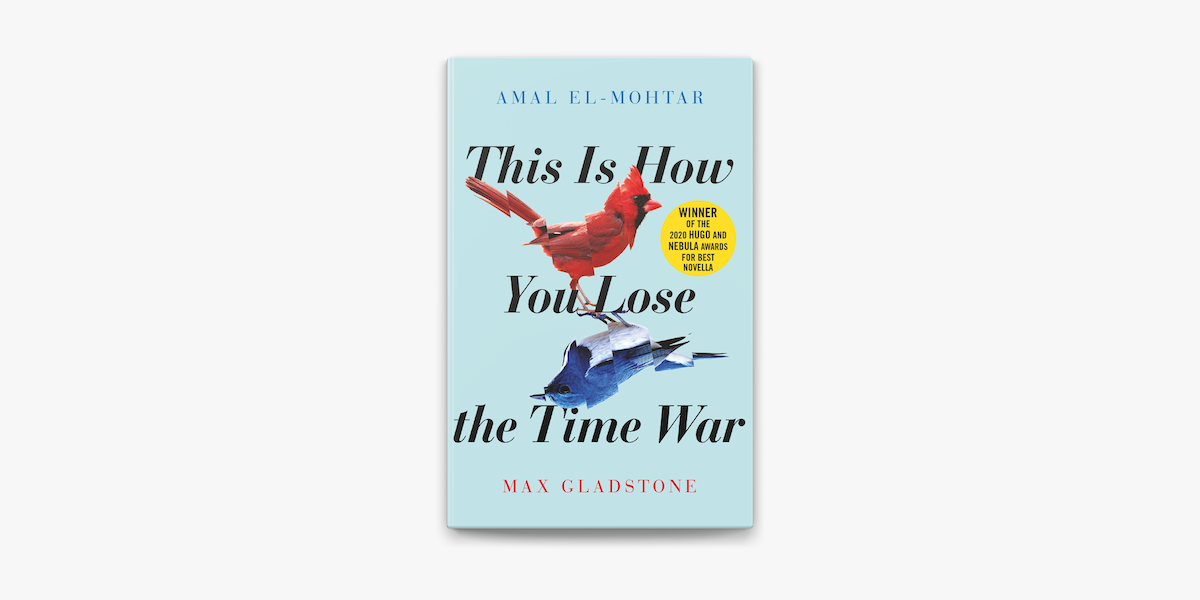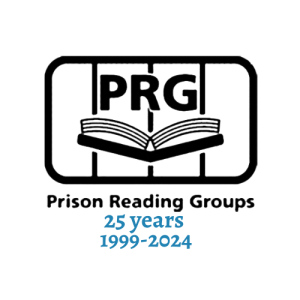
Reading Group Roundup: This is How You Lose the Time War
This is How You Lose the Time War by Amal El-Mohtar and Max Gladstone.
The novel follows Red and Blue, two time-travelling enemy agents, as they chase each other through different worlds and possible futures. The story is told as a series of letters. It starts out as a lethal cat and mouse game but becomes something quite different. It opens like this:
‘When Red wins, she stands alone. Blood slicks her hair. She breathes out steam in the last night of this dying world. That was fun, she thinks but the thought sours in the framing. It was clean at least. Climb up time’s threads into the past and make sure no one survives this battle to muddle the futures her Agency has arranged…
She holds a corpse that was once a man, her hands gloved in its guts, her fingers clutching its alloy spine.’
It’s a tricky mash-up of sci-fi and love story and a real marmite book for the four PRG groups who read it recently.
At Brixton, the volunteers just didn’t get it. ‘I hope someone will tell me what this book is about’. A few others agreed: ‘confusing, just words on a page’. But most of the group loved it: ‘the more I read, the more I got into it’; ‘an amazing book, ahead of its time’; ‘Sublime!’; ‘Red and Blue are maybe angel and devil or matter and anti-matter; ‘a great love story’.
The Lincoln group mostly found it bewildering: ‘It was hard to like the characters as they were both destroyers and there was not really any background so it was difficult to understand them’. But another member was intrigued by the format: ‘The book reminded me of gothic novels where diary entries and letters were a popular way of telling the narrative’.
Rye Hill mostly gave it a big thumbs-down:
‘The book repelled me so much I couldn’t even carry out the 50 page test’; ‘a cataclysm of pretentiousness’.
But Warren Hill had both pistol-whippers and champions: ‘The letters were my favourite part of the book, perhaps because I understood the idea of the back and forth correspondence more than the rest of the book’; ‘The letters made the characters real – gave them true emotions.’
What did you like or dislike most about the book: ‘the way you were never sure where the book was going – and every time you thought you did you were wrong’; ‘I found it very confusing to start with but then I liked the growing realisation that I didn’t have to understand it all. This ‘letting go’ was quite a new experience for me in a book’.
What three words would you use to describe the book: ‘confusing, happy, visionary’; ‘not my thing!’ ‘confusing, poetic, unusual’. And one member who went for just one: ‘Nuts!’
But after the meeting, the facilitator sent feedback from readers who aren’t in the group but had had the book passed on to them on the wing. The comments were fascinating and it’s great to see how the reading group books circulate:
‘One I passed it on to as I know he is a fan of fantasy said it was the best book he has read in a long time. He is a neurodiversity orderly and said that ideas of how memory works and how the senses are used also really resonated from that perspective too. The other chap took the copy we put on the wing and said the way it’s written really helped him read it and he said he read it rather than put the TV on which is a big deal for him.’
Check out your library to see if your prison has a reading group. If not, encourage your librarian to check out PRG’s website www.prisonreadinggroups.org.uk.
PRG is part of Give a Book.

